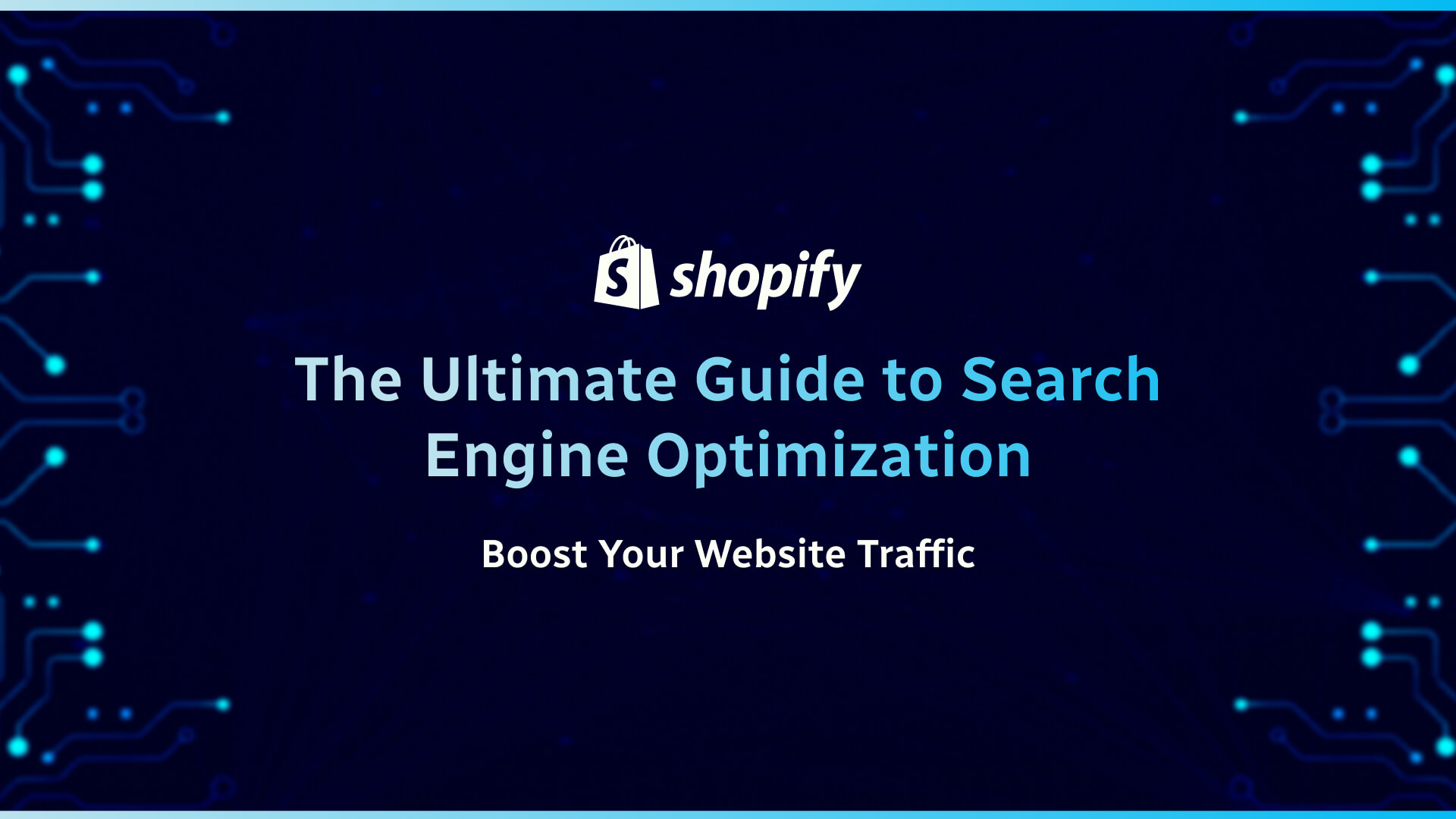- Table of Contents
- Introduction
- On-page SEO
- Off-page SEO
- Technical SEO
- Local SEO
- Mobile SEO
- Techniques for All Types of SEO
- Conclusion
Introduction
Search Engine Optimization, or SEO, is the practice of optimizing a website to improve its visibility and ranking on search engine results pages (SERPs). In today’s digital age, SEO has become an essential aspect of online business, as it can help drive more traffic to a website and increase conversions. With that said, there are various types of SEO that businesses should be aware of to ensure their website is optimized effectively. In this blog post, we will provide an overview of the different types of SEO, including on-page SEO, off-page SEO, technical SEO, local SEO, and mobile SEO. We will also delve into the key elements of each type of SEO and techniques that can be applied to all types. By the end of this post, readers will have a better understanding of SEO and how to implement effective strategies for their online businesses.

Types of SEO
On-page SEO

What is On-Page SEO?
On-page SEO refers to the optimization of your website’s content and structure to improve its search engine ranking. This includes everything from the formatting of your text to the placement of your keywords and the use of meta tags. On-page SEO is important because it helps search engines understand what your website is about and how relevant it is to specific search queries.
Why is On-Page SEO Important?
On-page SEO is important because it can significantly impact your website’s visibility in search engine results pages (SERPs). By optimizing your website’s content and structure for search engines, you can increase the likelihood that it will appear higher in search results when people search for relevant keywords. This can lead to more traffic, more leads, and ultimately, more revenue for your business.
Best Practices for On-Page SEO
To optimize your website’s on-page SEO, there are several best practices that you should follow. These include:
Conducting Keyword Research
Before you can optimize your website for search engines, you need to identify the keywords and phrases that are relevant to your business and your target audience. This involves conducting keyword research to determine which keywords are being searched for most frequently, and which ones are most likely to drive traffic to your website.
Optimizing Your Title Tags and Meta Descriptions
Title tags and meta descriptions are important because they provide a brief summary of what your website is about to both search engines and potential visitors. By optimizing your title tags and meta descriptions with relevant keywords and engaging language, you can increase the likelihood that people will click through to your website from search results.
Using Headings and Subheadings
Headings and subheadings are an important part of on-page SEO because they help to organize your content and make it easier for both search engines and visitors to understand. By using descriptive headings and subheadings that incorporate relevant keywords, you can make your content more accessible and user-friendly.
Incorporating Keywords Naturally
One of the most important aspects of on-page SEO is incorporating your keywords naturally throughout your content. This means using them in your headings, subheadings, and body copy in a way that feels natural and not forced. Overusing keywords can actually hurt your SEO ranking, so it’s important to use them strategically and sparingly.
Using Alt Tags for Images
Alt tags are descriptions that are added to images to provide context for search engines and visually impaired users. By using relevant keywords in your alt tags, you can help search engines understand what your images are about and improve your overall SEO ranking.
Optimizing Your URL Structure
Your website’s URL structure can also impact its SEO ranking. To optimize your URL structure, you should use descriptive, keyword-rich URLs that are easy to read and understand. This can help both search engines and visitors to better understand what your website is about and improve your overall ranking.
Off-page SEO

What is Off-page SEO?
Off-page SEO, also known as off-site SEO, refers to the optimization activities that take place outside your website to improve your website’s ranking and visibility on search engine results pages (SERPs). These activities aim to create backlinks or inbound links, which are hyperlinks from other websites to your site. Off-page SEO includes activities such as link building, social media marketing, influencer marketing, guest blogging, forum posting, Q&A sites, business directories, press releases, and video marketing.
Why is Off-page SEO Important?
Off-page SEO is crucial for several reasons. Firstly, it helps search engines like Google to determine the relevance, authority, and popularity of your website. The more high-quality backlinks you have from authoritative websites, the more likely it is for search engines to view your site as a credible and trustworthy source of information. Secondly, off-page SEO can increase the visibility and exposure of your website to a broader audience, which can lead to more organic traffic, higher conversion rates, and better revenue generation.
How Search Engines Evaluate Off-page SEO?
Search engines use complex algorithms to evaluate off-page SEO factors and rank websites accordingly. These algorithms analyze several factors such as the number, quality, and relevance of backlinks, the authority and reputation of the linking domains, the social media presence and engagement, the user engagement and behavior, and the overall online reputation and presence of the website. The search engines also penalize websites that engage in unethical or black-hat off-page SEO techniques such as link farms, spamming, or buying links.
The Top 10 Off-page SEO Techniques
Now let’s dive into the top 10 off-page SEO techniques that you can use to boost your website’s ranking and visibility.
Link Building
Link building is the process of acquiring backlinks from other websites to your website. The more high-quality, relevant, and authoritative backlinks you have, the higher your website’s ranking on search engine results pages. There are several link building techniques you can use, such as broken link building, skyscraper technique, resource page link building, and guest blogging.
Guest Blogging
Guest blogging is the process of writing a blog post for another website in your industry or niche, and in exchange, you get a backlink to your website. This technique not only helps you build high-quality backlinks but also allows you to reach a new audience and establish yourself as an industry expert.
Social Media Marketing
Social media marketing involves using social media platforms such as Facebook, Twitter, LinkedIn, and Instagram to promote your content, engage with your audience, and drive traffic to your website. By creating shareable and engaging content, you can attract a large number of followers and generate social signals, which can boost your website’s ranking and visibility.
Influencer Marketing
Influencer marketing involves partnering with influencers in your industry or niche to promote your products or services. By leveraging the influencer’s social media presence and audience, you can reach a new audience and generate high-quality backlinks to your website.
Content Marketing
Content marketing involves creating high-quality and engaging content such as blog posts, videos, infographics, and e-books, and promoting them through various channels such as social media, email, and guest blogging. By creating valuable content that provides value to your audience, you can attract a large number of visitors, generate backlinks, and establish yourself as an industry expert.
Forum Posting
Forum posting involves participating in online forums and discussion boards related to your industry or niche and providing valuable insights and answers to questions. By participating in forums and including links to your website in your signature, you can generate backlinks and establish yourself as an authority in your industry.
Q&A Sites
Q&A sites such as Quora and Yahoo Answers are excellent platforms to promote your website and establish yourself as an expert in your industry. By answering questions related to your niche and including links to your website, you can generate backlinks and attract a new audience.
Business Directories
Business directories such as Yelp, Google My Business, and Yellow Pages are excellent platforms to promote your business and generate backlinks. By creating a listing on these directories and including your website’s URL, you can attract a new audience and improve your website’s ranking.
Press Releases
Press releases are a great way to promote your business and generate backlinks from authoritative websites. By creating a newsworthy story about your business and distributing it through various channels, you can attract media attention, generate backlinks, and improve your website’s ranking.
Video Marketing
Video marketing involves creating high-quality and engaging videos related to your industry or niche and promoting them through various channels such as YouTube, Vimeo, and social media. By creating shareable and valuable videos, you can attract a large number of viewers, generate backlinks, and improve your website’s ranking.
Off-page SEO vs On-page SEO
While off-page SEO is crucial for driving traffic to your website and improving your online presence, it should not be neglected in favor of on-page SEO. On-page SEO refers to the optimization activities that take place on your website to make it search engine friendly, such as optimizing meta tags, header tags, and content. Both off-page SEO and on-page SEO are equally important for improving your website’s ranking and visibility on search engine results pages.
Common Off-page SEO Mistakes to Avoid
While off-page SEO can be highly effective in boosting your website’s ranking and visibility, it can also lead to penalties and lower rankings if done incorrectly. Some common off-page SEO mistakes to avoid include:
- Engaging in unethical or black-hat SEO techniques such as link farms, spamming, or buying links.
- Focusing on quantity over quality when it comes to back links, as this can lead to a high number of low-quality links that can harm your website’s ranking.
- Using irrelevant or spammy anchor text for your backlinks, which can make your website appear less trustworthy and result in penalties.
- Neglecting your social media presence, which can lead to missed opportunities for generating backlinks and engaging with your audience.
- Not regularly updating and promoting your content, which can result in stagnant rankings and missed opportunities for attracting new visitors and backlinks.
Technical SEO

As a website owner or online marketer, you might have heard the term “technical SEO” many times, but what exactly does it mean? Technical SEO refers to the process of optimizing your website’s technical elements to improve its search engine ranking and overall performance. In this guide, we’ll cover everything you need to know about technical SEO, including its importance, best practices, and tips to implement it effectively.
Why is Technical SEO Important?
Technical SEO is crucial for improving your website’s visibility and ranking on search engine results pages (SERPs). The technical aspects of your website, such as site speed, mobile-friendliness, and structured data, affect how search engines crawl and index your site’s pages. By optimizing these technical elements, you can ensure that search engines understand and display your content correctly, leading to increased organic traffic and better user experience.
Technical SEO Best Practices
To improve your website’s technical SEO, you should follow these best practices:
Optimize Site Speed
Site speed is a critical factor in user experience and SEO. Slow-loading sites lead to higher bounce rates, lower engagement, and lower search engine rankings. To optimize your site speed, you should:
- Use a content delivery network (CDN)
- Minimize HTTP requests
- Optimize images
- Use caching
- Minimize JavaScript and CSS files
- Compress files
Ensure Mobile-Friendliness
In today’s mobile-first world, having a mobile-friendly website is crucial. Google considers mobile-friendliness as a ranking factor and penalizes sites that are not optimized for mobile devices. To ensure mobile-friendliness, you should:
- Use responsive design
- Avoid pop-ups and interstitials
- Optimize font size and spacing
- Test your site with Google’s Mobile-Friendly Test tool
Use Structured Data
Structured data helps search engines understand the content of your website better. By adding schema markup to your site’s pages, you can provide additional context and information to search engines. This can lead to improved search engine results and more organic traffic. To use structured data effectively, you should:
- Choose relevant schema markup types
- Add schema markup to all pages
- Test your markup with Google’s Structured Data Testing Tool
Optimize Site Architecture
Your website’s architecture affects how search engines crawl and index your pages. A well-organized site structure helps search engines understand the hierarchy of your content and makes it easier for users to navigate your site. To optimize your site’s architecture, you should:
- Use a clear and logical site structure
- Use descriptive and hierarchical URLs
- Add internal links to related content
- Remove duplicate content
Fix Technical Issues
Technical issues such as broken links, 404 errors, and crawl errors can harm your site’s SEO and user experience. To identify and fix these issues, you should:
- Use a website crawler tool like Screaming Frog
- Check your site’s crawl errors in Google Search Console
- Fix broken links and redirects
- Optimize your robots.txt file
Tips for Effective Technical SEO Implementation
To implement technical SEO effectively, you should follow these tips:
- Use Google Analytics and Google Search Console to monitor your website’s performance and identify technical issues.
- Keep your website up-to-date with the latest technologies and best practices.
- Regularly perform website audits to identify technical issues and opportunities for improvement.
- Work with a professional SEO agency or consultant to ensure that your technical SEO is up to par.
Local SEO

If you own a local business, then local SEO should be a top priority for you. Local SEO is the process of optimizing your website and online presence to attract more local customers and improve your local search visibility. In this guide, we’ll cover everything you need to know about local SEO, including its importance, best practices, and tips to implement it effectively.
Why is Local SEO Important?
Local SEO is crucial for businesses that rely on local customers to generate revenue. By optimizing your website and online presence for local search, you can increase your visibility in local search results, attract more local customers, and grow your business. Local SEO can also help you build trust with your audience, as it shows that your business is a part of the local community.
Local SEO Best Practices
To improve your local search visibility, you should follow these best practices:
Claim and Optimize Your Google My Business Listing
Google My Business (GMB) is a free tool provided by Google that allows businesses to manage their online presence across Google, including Google Search and Google Maps. By claiming and optimizing your GMB listing, you can ensure that your business information is accurate and up-to-date, which can improve your visibility in local search results. To optimize your GMB listing, you should:
- Add accurate and complete business information, including your business name, address, phone number, and website URL
- Choose the right business category
- Upload high-quality photos of your business
- Encourage customer reviews
Use Local Keywords on Your Website
Using local keywords on your website can help search engines understand the relevance of your content to local search queries. To optimize your website for local search, you should:
- Include your city or region in your website’s title tags and meta descriptions
- Add local keywords to your website’s content, including your homepage, service pages, and blog posts
- Include your business address and phone number on your website’s contact page
Build Local Citations
A citation is any online mention of your business’s name, address, and phone number (NAP). Building local citations can improve your local search visibility and help potential customers find your business. To build local citations, you should:
- List your business on local directories, such as Yelp, Yellow Pages, and Angie’s List
- Get listed on industry-specific directories
- Ensure that your NAP information is consistent across all citations
Get Backlinks from Local Websites
Backlinks from local websites can improve your local search visibility and establish your business’s authority in the local community. To get backlinks from local websites, you should:
- Reach out to local bloggers and journalists and offer them valuable content or insights
- Sponsor local events and charities and get a link back from their websites
- Join local business associations and get listed on their websites
Use Social Media to Engage with Local Customers
Social media can help you connect with local customers, build brand awareness, and improve your local search visibility. To use social media effectively, you should:
- Post regularly on social media platforms that your local audience uses
- Use local hashtags and geotags to reach a local audience
- Engage with your followers and respond to their comments and messages
Tips for Effective Local SEO Implementation
To implement local SEO effectively, you should follow these tips:
- Monitor your online reputation and respond to customer reviews promptly.
- Use Google Analytics and Google Search Console to track your website’s performance and identify areas for improvement.
- Regularly update your website’s content and ensure that it’s relevant and valuable to your local audience.
- Work with a professional SEO agency or consultant to ensure
Mobile SEO

In today’s digital age, mobile devices have become an integral part of our lives. With the increasing use of smartphones and tablets, it’s essential for businesses to ensure that their websites are optimized for mobile devices. Mobile SEO is the process of optimizing your website to rank higher in mobile search results. In this article, we’ll cover everything you need to know about mobile SEO, from understanding the basics to implementing advanced strategies.
What is Mobile SEO?
Mobile SEO refers to the process of optimizing your website for mobile devices. It involves making your website more mobile-friendly, so it loads quickly, is easy to navigate, and provides a seamless user experience. Mobile SEO is essential because mobile devices have different screen sizes and resolutions than desktops. Therefore, your website needs to adapt to these differences to provide a better user experience.
Why is Mobile SEO Important?
Mobile SEO is crucial for businesses because mobile devices are becoming the primary way people access the internet. According to Statista, the number of smartphone users worldwide is expected to reach 3.8 billion by 2021. Additionally, Google has announced that mobile-first indexing will be the default for all new websites starting in July 2021. This means that Google will use the mobile version of your website to determine its ranking in search results. Therefore, if your website is not optimized for mobile devices, it may not rank well in mobile search results, resulting in fewer website visitors and less traffic.
How to Optimize Your Website for Mobile Devices?
Optimizing your website for mobile devices involves various strategies, including:
Responsive Design
Responsive design is a design approach that allows your website to adjust its layout based on the screen size and resolution of the device it’s being viewed on. It ensures that your website looks great and functions well on any device, whether it’s a smartphone, tablet, or desktop. Responsive design is crucial for mobile SEO because it provides a seamless user experience, which can improve your website’s ranking in search results.
Page Speed
Page speed is crucial for mobile SEO because mobile users have a shorter attention span than desktop users. According to Google, the average mobile website takes 15 seconds to load, but 53% of mobile users will abandon a website if it takes longer than 3 seconds to load. Therefore, it’s essential to optimize your website’s page speed by minimizing image size, leveraging browser caching, and reducing the number of HTTP requests.
Mobile-Friendly Content
Mobile-friendly content is essential for mobile SEO because mobile users consume content differently than desktop users. They tend to scan content rather than reading it thoroughly. Therefore, it’s essential to create mobile-friendly content by using shorter paragraphs, subheadings, bullet points, and bold text to make your content easier to read and scan.
Mobile-Friendly Navigation
Mobile-friendly navigation is crucial for mobile SEO because it makes it easier for users to find what they’re looking for on your website. It involves simplifying your website’s navigation menu, using a hamburger menu icon, and ensuring that your website’s buttons and links are easy to click on.
Local SEO
Local SEO is essential for businesses that have a physical location because it helps them rank higher in local search results. It involves optimizing your website’s content for local keywords, creating local business listings, and managing your online reviews.
Advanced Mobile SEO Strategies
In addition to the basics, there are several advanced mobile SEO strategies that you can implement to improve your website’s ranking in mobile search results, including:
Accelerated Mobile Pages (AMP)
Accelerated Mobile Pages (AMP) is an open-source project that aims to make web pages load faster on mobile devices by creating lightweight versions of HTML pages. By implementing AMP on your website, you can improve your website’s page speed, which can help it rank higher in mobile search results.
Structured Data
Structured data is a type of code that provides additional information about your website’s content to search engines. By implementing structured data on your website, you can improve its visibility in search results and provide users with more useful information. Structured data can also help your website appear in rich snippets, which can improve your click-through rate.
Voice Search Optimization
Voice search is becoming increasingly popular, with more and more people using voice assistants like Siri, Alexa, and Google Assistant to search for information. Therefore, optimizing your website for voice search can help you reach a wider audience. To optimize your website for voice search, you should focus on using conversational language, answering common questions, and using long-tail keywords.
App Indexing
If you have a mobile app, you can improve its visibility in search results by implementing app indexing. App indexing allows your app’s content to appear in search results, even if the user doesn’t have your app installed. By implementing app indexing, you can increase your app’s visibility and drive more downloads.
Techniques for All Types of SEO

Search Engine Optimization (SEO) is an essential part of online marketing. It involves several techniques that improve the visibility and ranking of a website or web page in search engine results pages (SERPs). Effective SEO strategies help businesses gain more traffic, generate leads, and increase conversions. In this article, we will discuss five essential techniques for all types of SEO that can help improve your website’s visibility, ranking, and traffic.
Keyword Research
Keyword research is the process of identifying the most relevant and profitable keywords or phrases that users use to search for information, products, or services related to your business. Keyword research helps you understand the search intent of your target audience and optimize your website’s content around those keywords. It also helps you identify new opportunities for content creation, advertising, and marketing.
How to Conduct Keyword Research
- Use Google Keyword Planner to find relevant keywords and search volumes
- Analyze the search intent of your target audience and create content around those keywords
- Use long-tail keywords to target specific niches and low-competition keywords to rank quickly
- Analyze your competitor’s keywords and identify opportunities for improvement
- Use keyword research tools like SEMrush, Ahrefs, and Moz to analyze your website’s keywords and track your rankings
Competitor Analysis
Competitor analysis is the process of analyzing your competitors’ SEO strategies, keywords, and backlinks to identify opportunities for improvement. It helps you understand the competitive landscape of your industry and develop effective SEO strategies that can help you outrank your competitors.
How to Conduct Competitor Analysis
- Identify your main competitors in your industry or niche
- Analyze their website’s structure, content, and keywords
- Identify their backlink profile and find opportunities for link building
- Analyze their social media presence and identify opportunities for social media marketing
- Use competitor analysis tools like SEMrush, Ahrefs, and Moz to track your competitors’ SEO strategies and rankings
Analytics and Data Tracking
Analytics and data tracking are essential for monitoring the performance of your website and SEO strategies. It helps you understand your audience’s behavior, track your website’s traffic and conversions, and identify opportunities for improvement.
How to Use Analytics and Data Tracking
- Set up Google Analytics and Google Search Console to track your website’s traffic and performance
- Monitor your website’s bounce rate, time on site, and conversion rates to identify opportunities for improvement
- Use heat maps and user behavior tools to analyze your audience’s behavior on your website
- Track your website’s backlinks, keyword rankings, and social media metrics to monitor your SEO performance
- Use analytics and data tracking tools like SEMrush, Ahrefs, and Moz to monitor your website’s performance and identify opportunities for improvement
Content Creation and Optimization
Content creation and optimization are essential for SEO. High-quality and relevant content can help you attract more traffic, generate leads, and increase conversions. Optimizing your content for keywords, titles, meta descriptions, and headers can help you improve your website’s ranking and visibility.
How to Create and Optimize Content
- Create high-quality and relevant content that meets the search intent of your target audience
- Use keyword research to optimize your content for keywords, titles, meta descriptions, and headers
- Use internal linking to improve your website’s structure and user experience
- Use multimedia elements like images, videos, and infographics to make your content more engaging
- Use content optimization tools like Yoast SEO and SEMrush to optimize your content for SEO
User Experience Optimization
User experience optimization (UXO) is essential for SEO. A positive user experience can help you improve your website’s bounce rate, time on site, and conversion rates. It involves several elements like website design, site Apologies for the error in my previous message. Here is the continuation of the article:
How to Optimize User Experience
- Create a user-friendly website design that is easy to navigate and visually appealing
- Use responsive design to ensure that your website is mobile-friendly
- Optimize your website’s loading speed to improve user experience and SEO
- Use clear and concise calls-to-action (CTAs) to guide your audience towards conversion
- Use A/B testing to identify opportunities for improvement and optimize your website’s user experience
Conclusion
In today’s digital age, having a strong online presence is crucial for the success of any business, and Search Engine Optimization (SEO) plays a vital role in achieving that. Understanding the different types of SEO is important to develop a comprehensive strategy to improve your website’s ranking on search engines.
On-Page SEO involves optimizing your website’s content and structure, Off-Page SEO involves building links and creating a strong online reputation, Technical SEO involves optimizing your website’s technical aspects, Local SEO involves targeting specific geographical areas, and Mobile SEO focuses on ensuring a positive experience for users on mobile devices.
To achieve success in SEO, you need to focus on techniques that work for all types of SEO, such as keyword research, competitor analysis, analytics and data tracking, content creation and optimization, and user experience optimization. By implementing these techniques and paying attention to the key elements of each type of SEO, you can improve your website’s visibility on search engines and attract more relevant traffic.
In conclusion, SEO is not a one-time fix but rather an ongoing process. With a strong SEO strategy, you can not only boost your website’s ranking on search engines but also drive more traffic and ultimately increase revenue for your business.





